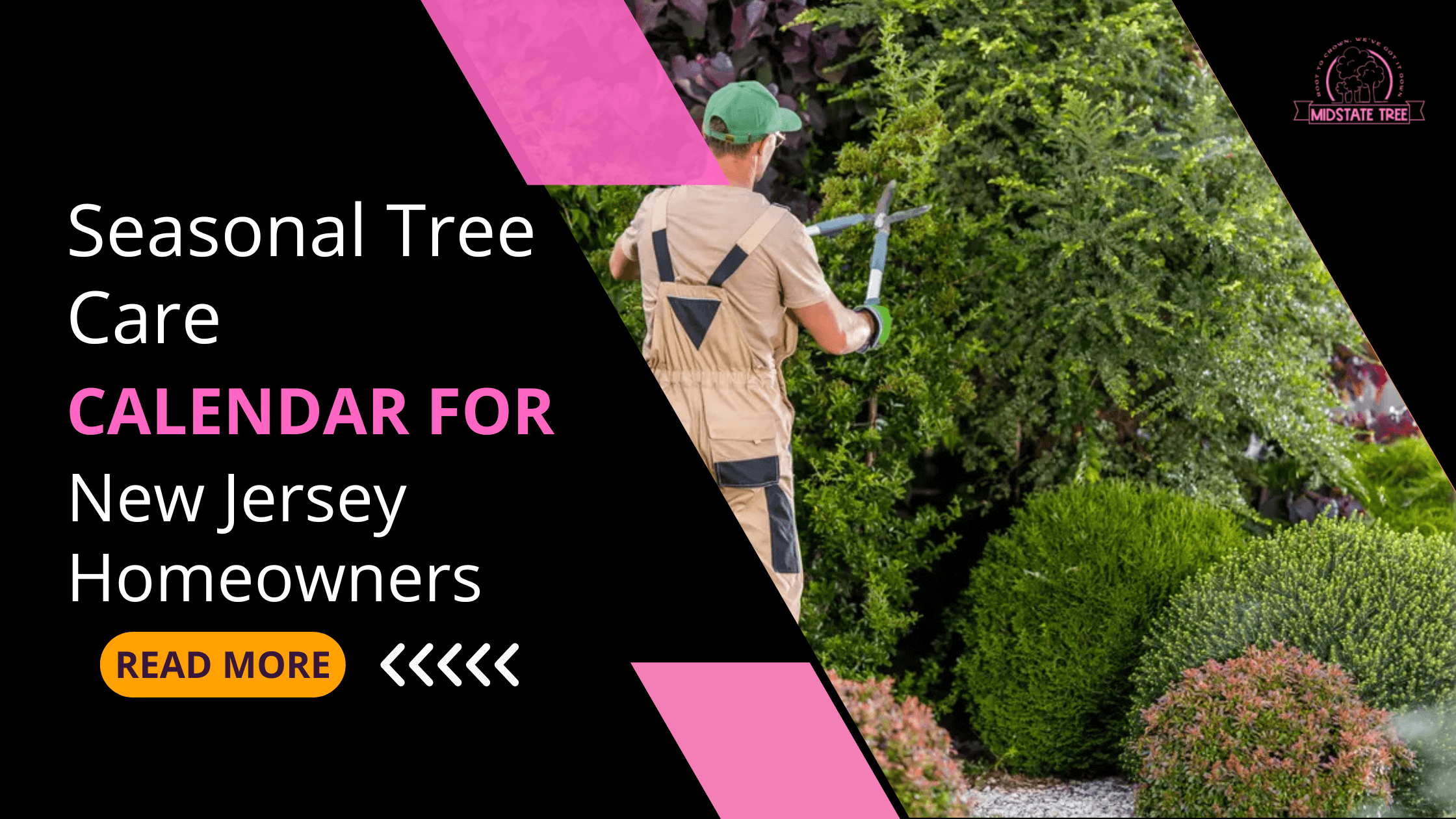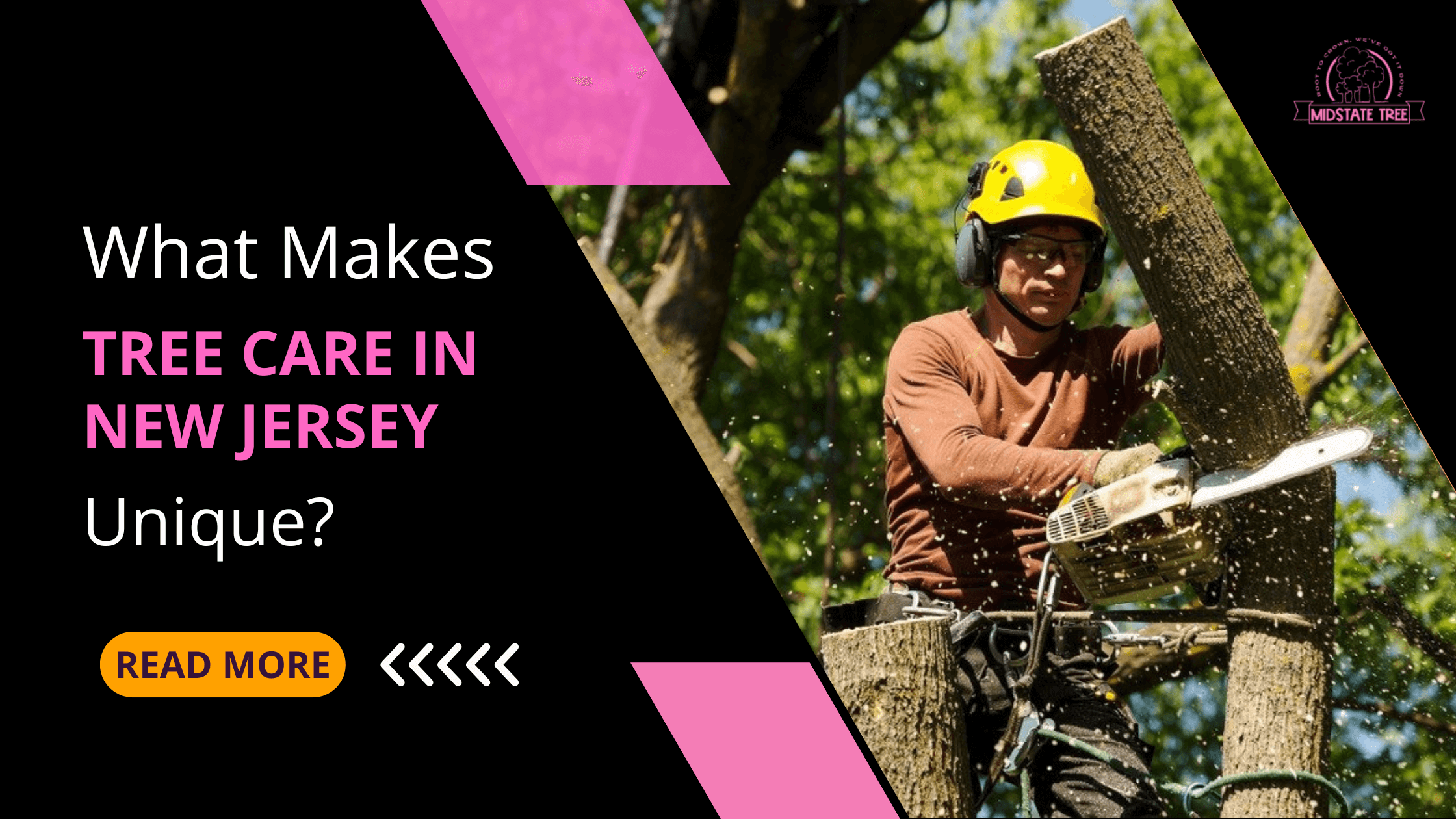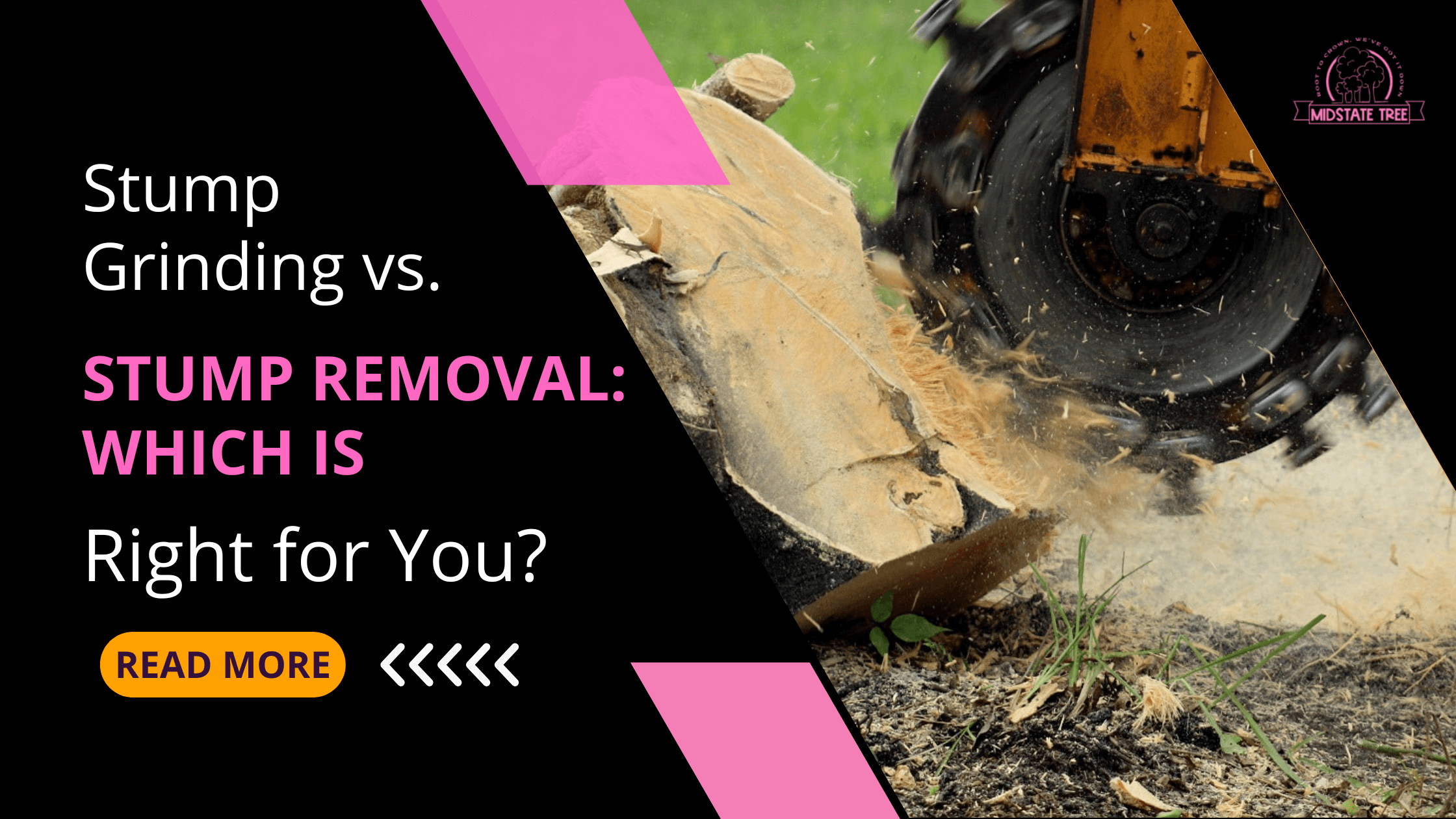Quick Answer:
Small trees can be gone in a few hours. Medium ones usually take a full day. Bigger trees might need two or more days, especially if a crane is involved or permits are delayed. In New Jersey, local laws and utility mark-outs can stretch the whole process over a few weeks.
Let’s break it all down so you can plan better, avoid surprises, and even speed things up.
Tree Removal Timeframes at a Glance
Here’s a rough guide based on the size of the tree and the job complexity:
Small Tree (Under 30 ft / <12” DBH) – 2 to 4 hours
Medium Tree (30–60 ft / 12–24” DBH) – 1 full day
Large Tree (60+ ft / 24–36” DBH) – 1 to 2 days
Extra-Large or Hazardous Trees – 2–3+ days, especially if they’re over houses or near power lines
Stump Grinding – 1 to 3 hours, or a separate visit
Permit Wait in NJ – 3 to 20 business days
Scheduling Lead Time – 2 to 14 days, longer in summer storms
What Affects Tree Removal Time?
Understanding how long a tree removal will take isn’t just about the size of the tree. Multiple factors combine to shape the actual timeline — from local permit delays to equipment used on-site.
Below, we dive deep into each element that can either speed up or slow down your tree removal service near you.
1. Tree Size, Species, and DBH (Diameter at Breast Height)
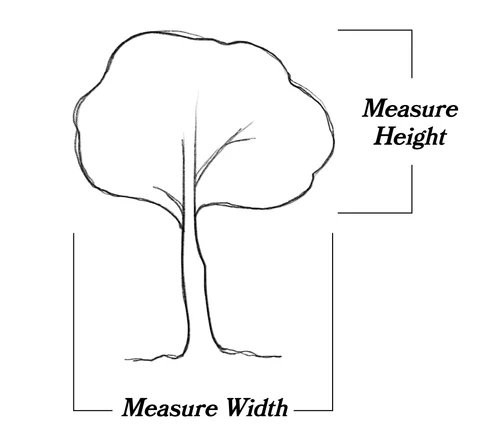
Why it matters: The size of the tree is the most obvious factor — but not the only one.
Arborists use DBH, or Diameter at Breast Height, to assess tree size. It’s measured 4.5 feet above ground and helps determine:
The amount of wood volume to remove
The type of rigging required
Whether a permit is needed in many NJ municipalities
Whether special equipment (like a crane) is required
Time implications by DBH and height:
| Tree Size | DBH (Diameter at Breast Height) | Time Estimate | Common Equipment Needed | |||||||||||||||||||||||||||||||||||||||||||||||||||||||||||||||||||||||||||||||||||||||||||||||||
|---|---|---|---|---|---|---|---|---|---|---|---|---|---|---|---|---|---|---|---|---|---|---|---|---|---|---|---|---|---|---|---|---|---|---|---|---|---|---|---|---|---|---|---|---|---|---|---|---|---|---|---|---|---|---|---|---|---|---|---|---|---|---|---|---|---|---|---|---|---|---|---|---|---|---|---|---|---|---|---|---|---|---|---|---|---|---|---|---|---|---|---|---|---|---|---|---|---|---|---|---|
| Small Tree | Under 12″ | 2–4 hours | Chainsaw, chipper | |||||||||||||||||||||||||||||||||||||||||||||||||||||||||||||||||||||||||||||||||||||||||||||||||
| Medium Tree | 12–24″ | 1 full day | Bucket truck, rigging gear | |||||||||||||||||||||||||||||||||||||||||||||||||||||||||||||||||||||||||||||||||||||||||||||||||
| Large Tree | 24–36″ | 1–2 days | Crane, clim Species impact:
2. Tree Condition, Health, and Risk Factors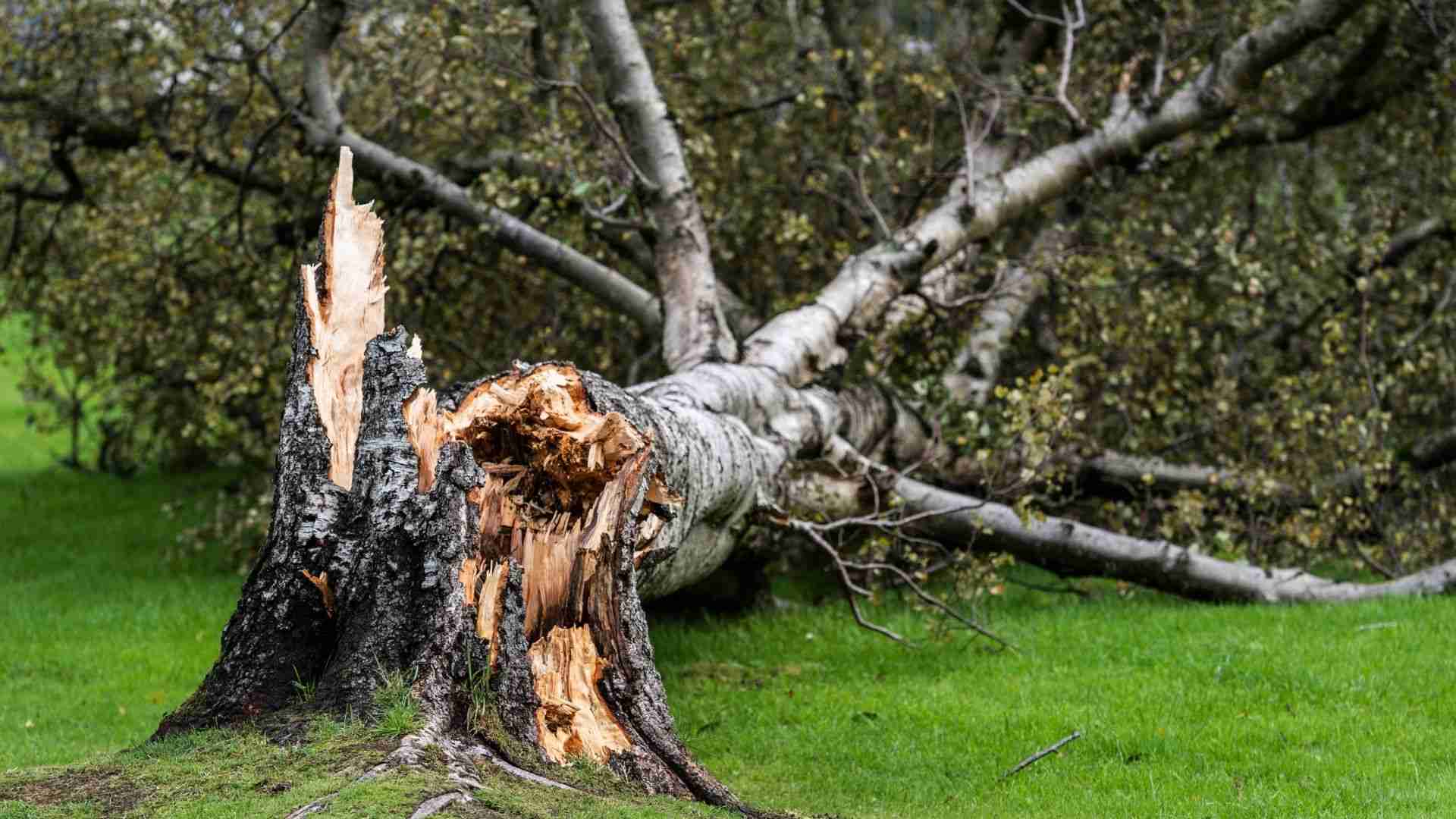 Why it matters: A dead, decaying, or unstable tree can be far more dangerous — and time-consuming — to remove safely. Key risk conditions:
Result: Crews must rig and lower sections slowly, increasing the time and crew size needed. 3. Access to the Tree and Work Area ConditionsWhy it matters: Even a small tree can turn into a half-day ordeal if the crew can’t reach it with the right tools. Common access issues that slow removal:
When cranes or bucket trucks can’t be positioned close to the tree, crews have to climb manually, using saddles, ropes, and pulleys, then rig down branches to avoid damage. This process can double or triple the removal time. 4. Equipment Used: From Chainsaws to CranesWhy it matters: The tools deployed often dictate the job speed — but not all sites are suitable for all gear. Time-saving equipment (when access allows):
Note for NJ homeowners: In tighter suburban neighborhoods like Flemington or Clinton, large equipment may not fit down narrow driveways or past parked cars — which means longer setup times or manual dismantling. 5. Crew Size and ExperienceWhy it matters: A bigger or more experienced team can drastically reduce job time, especially for complex or risky removals.
Look for a company that sends ISA Certified Arborists — like we do at Midstate Tree — to ensure safety and speed. 6. Permits and NJ Utility Mark-OutsWhy it matters: Tree removal in NJ is often subject to local ordinances, permit requirements, and 811 mark-outs. Permit delays:
811 mark-outs:
Pro tip: Apply for permits as soon as you approve your tree removal quote. You don’t need to wait for the crew to be available first. 7. Weather, Season, and Site ConditionsWhy it matters: Weather can delay both scheduling and the actual removal process. Delays caused by:
Also, spring and summer bring storm seasons, which cause spikes in emergency jobs. Homeowners booking routine removals may see longer lead times during these months. 8. Debris Removal and CleanupWhy it matters: Tree removal isn’t over when the tree is down — cleanup adds time. Typical add-ons:
Some clients request we leave logs for firewood — which can save haul-away time but adds cutting time. Others prefer full removal, which means loading and trucking away large volumes. Also, some NJ towns require debris to be hauled only by licensed recycling or waste haulers — which adds time and coordination. What You Can Control vs. What You Can’t
Full Tree Removal Process (From First Call to Final Cleanup)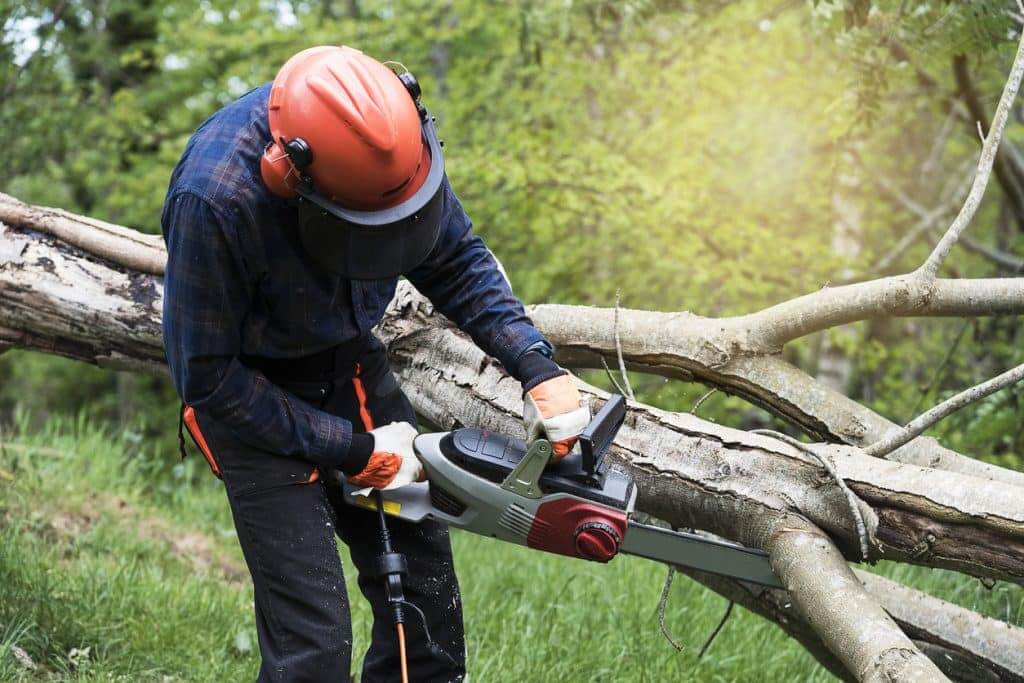 Knowing what to expect helps you plan better. Here’s how a typical job flows. Step 1: Free Estimate (0–3 Days)After you call or fill out the estimate form, we check out your tree—either from photos or with an on-site visit. We measure the DBH, look at hazards, and give you a quote and realistic timeline. Step 2: Permit Application (3–20 Business Days)In towns like Clinton, Phillipsburg, or Washington, you’ll often need a tree removal permit. We’ll help with the paperwork, but town approvals take time—especially if the Shade Tree Commission meets only twice a month. Step 3: Utility Mark-Out (3+ Days)Call 811 to mark gas, water, cable, and power lines underground. This is required before grinding stumps or digging. Step 4: Scheduling the Job (2–14 Days)Depending on the weather, backlog, and your flexibility, your job gets scheduled. Emergency jobs are prioritized, especially if a tree threatens a home or power lines. Step 5: Equipment Setup (30–90 Minutes)Crews may need to set up cranes, lay down plywood to protect your lawn, and prep rigging systems. Step 6: Tree Cutting (Hours to Multi-Day)The actual removal can be fast—especially if the tree is straightforward. But complex jobs take longer, especially near homes, pools, or electric wires. Step 7: Hauling and Stump GrindingSome folks want us to leave firewood rounds; others want full cleanup. Stump grinding may be done the same day or scheduled later, depending on the mark-out. Step 8: Final CheckSome towns require us to confirm removal or plant a new tree as part of permit compliance. 1-Day vs. Multi-Day Jobs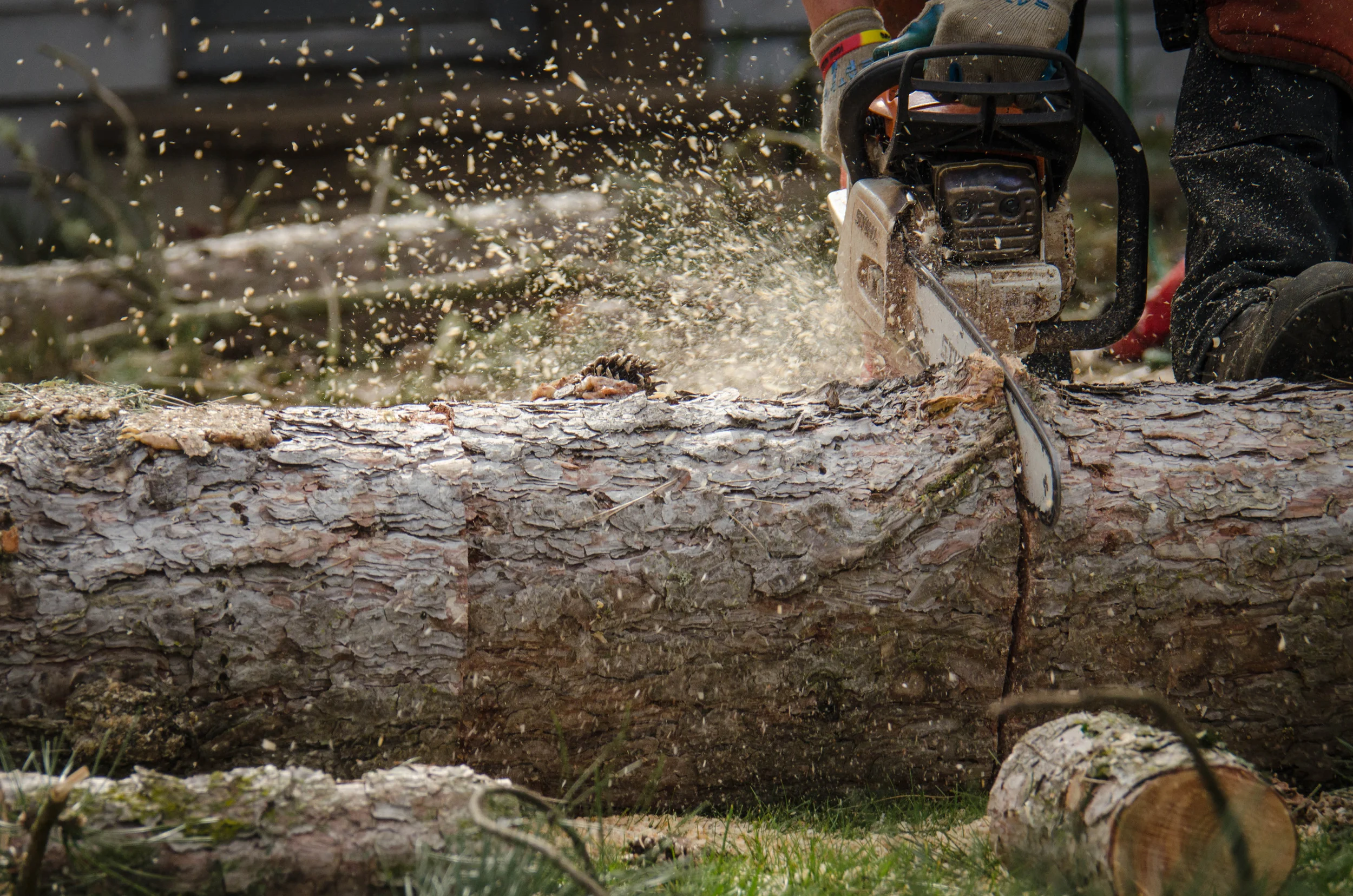 Not all tree removals are created equal. While some jobs wrap up in just a few hours, others stretch into multi-day operations due to the tree’s size, location, risk level, and the equipment required. Understanding how job timelines vary helps you plan better — and avoid surprises. Let’s break down the key categories by tree size, DBH (diameter at breast height), and technical complexity, using real-world examples based on common scenarios in New Jersey. Small Trees (Under 30 ft / <12” DBH) Typical Duration: 2–4 hours These are the easiest and quickest removals. Think of ornamental trees, dogwoods, redbuds, or younger maples and pines growing in open areas. Most small trees can be taken down without heavy rigging and often don’t require a bucket truck or crane. Common examples:
Access Note: If the tree is easily accessible with no nearby utilities, fences, or landscaping, the job may be done in less than half a day — including stump grinding.
Medium Trees (30–60 ft / 12–24” DBH)Typical Duration: 1 full day Medium trees often grow in front yards, side setbacks, or near driveways. These jobs usually require:
These jobs tend to be more complex than small trees but don’t always require a crane. Common examples:
Permit Insight: Most NJ towns (e.g., Clinton, Phillipsburg) require permits for trees above a certain caliper (often 8–16″). Applying for the permit adds 5–20 business days to the project timeline if you haven’t submitted early.
Large Trees (60+ ft / 24–36” DBH)Typical Duration: 1.5 to 2 days Large trees have tall canopies, wide trunks, and often spread over homes, roads, or power lines. Removal involves:
These trees may exceed 75 feet in height, especially mature oaks, poplars, or sycamores. Trees in tight lots, or growing through decks, fences, or sheds, increase the complexity. Common examples:
Timeline Consideration: Even with great crew size, the job might require 2 days just for safety and logistics. Stump grinding is often done during a separate visit.
Extra-Large, Hazardous, or Crane-Assisted RemovalsTypical Duration: 2–3+ days These are the most complex tree removals, involving:
Cranes are used when:
The actual crane-assisted cutting can be fast — but setup, transport, logistics, and debris handling add days to the full project. Common examples:
Timing Factors:
Timeline Summary Table
How NJ Permits Can Slow It Down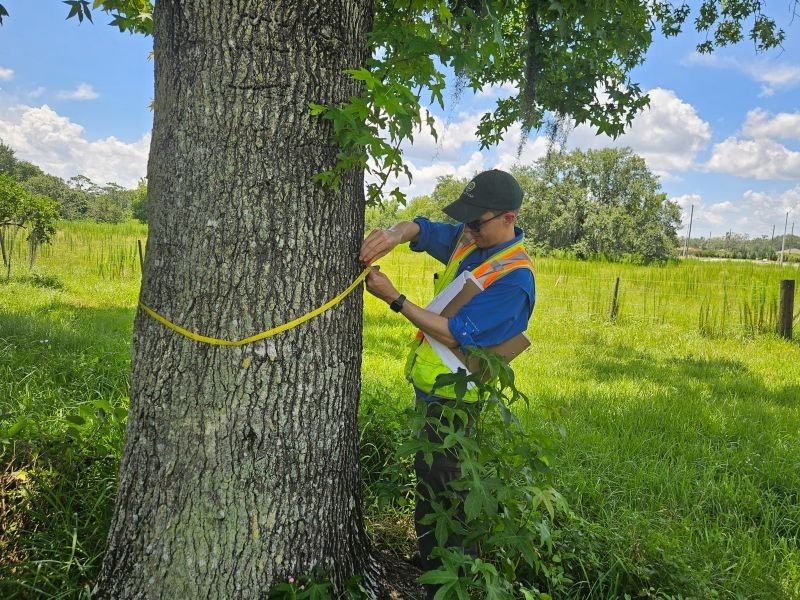 Tree removal in New Jersey is not always a quick phone call and a saw away. Many homeowners are surprised to learn that their local municipality requires a tree removal permit — even if the tree is on private property. Depending on your town, permits can take anywhere from 3 to 20 business days (or longer) to obtain. In some cases, your application may need to be reviewed by a Shade Tree Commission or zoning board, which can extend your timeline by weeks. Let’s break down why, when, and where permits can hold up your removal — and what you can do to move faster. 1. When Does NJ Require a Tree Removal Permit?While there is no statewide tree ordinance in New Jersey, most towns and counties have their own local regulations. These rules often depend on tree size, species, location, and quantity. You will typically need a permit if:
2. Common Permit Requirements in NJ TownsEach municipality sets its own permit rules, but here’s what you can expect:
3. Shade Tree Commissions: Why They Delay ThingsA Shade Tree Commission is a municipal board tasked with protecting trees in public spaces and often private lots. These commissions:
They typically meet monthly or bi-weekly, so if you submit your permit right after a meeting, your application might not be reviewed for 2–4 weeks.
4. Common NJ Towns with Tree Permit DelaysHere are a few local areas where tree permits are regularly enforced and can cause delays:
Tip: Always check your town’s official tree ordinance or call the zoning or planning office before scheduling your job. We’re also happy to guide you through the paperwork at Midstate Tree. 5. Do Emergencies Require a Permit in NJ?In most towns, no permit is needed when:
However, documentation is key:
6. How to Avoid Permit-Related DelaysHere’s how you can save time on the front end:
Does Stump Grinding Happen the Same Day as Tree Removal?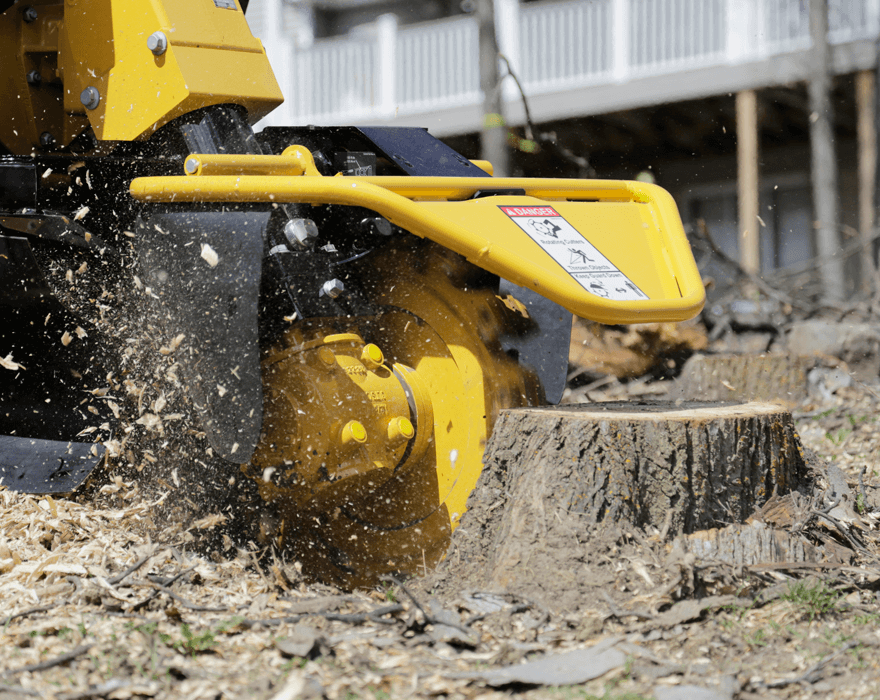 Short answer: Sometimes it does — but not always. Whether or not stump grinding happens the same day as your tree removal depends on factors like utility clearance, crew scheduling, weather, and ground conditions. Let’s break it down. What Is Stump Grinding, and Why Is It Separate?Stump grinding is the process of removing the visible portion of the tree stump and part of the root flare using a specialized machine called a stump grinder. This machine has a fast-spinning carbide-toothed wheel that shreds the wood into mulch. Unlike cutting down a tree, which can be done quickly with chainsaws and rigging, stump grinding requires extra equipment, mark-outs for underground utilities, and sometimes different crew members. Typical Stump Grinding Timeline
Grind depth typically ranges from 6” to 12”, depending on whether you plan to replant or lay sod afterward. Utility Clearance: The Biggest FactorIn New Jersey, before any stump grinding can take place, the area must be cleared of underground utilities through a NJ One Call 811 mark-out. What does the mark-out check for?
How long does this take? Weather and Ground ConditionsIf the ground is:
… then the stump grinder may sink, get stuck, or cause lawn damage. In those cases, crews may wait for drier conditions and return later. Crew SchedulingMany professional tree services (including Midstate Tree) use specialized stump grinding crews that operate independently from the removal team. So, even if your tree is taken down today, stump grinding may be scheduled for another day depending on:
Can I Replant or Build Over the Stump?If you plan to:
… you’ll need deeper grinding — up to 12–16 inches and a full surface cleanup. Midstate Tree offers optional backfill, topsoil, and seeding services to restore your lawn post-grind. Just mention it during your quote. Pro Tips to Ensure Same-Day Grinding (If Possible)
What About Emergency Tree Removals?Tree emergencies are different. When a tree falls suddenly, leans dangerously, or comes into contact with a structure or utility line, you don’t have time to wait for permits or mark-outs. What Qualifies as an Emergency?
If your tree poses an immediate safety hazard, removal can usually be performed right away, without a permit. Documentation Is Still ImportantEven if your township waives the permit, be sure to:
Some municipalities may still require after-the-fact reporting, especially if the tree was on a regulated property (e.g., historic district or street tree). What If the Tree Is on Power Lines?Never attempt removal yourself. If live wires are involved:
How Fast Can We Respond?At Midstate Tree, we offer 24/7 emergency response in Warren and Hunterdon County, NJ.
Emergency Tree Removal Timeline (Real Example)Storm-damaged pine tree leaning toward home in Clinton, NJ
Real Timeline ExamplesSmall Maple in Backyard, Easy Access
Large Oak Over Driveway, Crane Needed
Emergency Pine on Wires
Serving NJ with Safe, Fast Tree RemovalWith certified arborists in NJ, modern equipment we handle everything—from permits and utility checks to stump grinding and cleanup. With certified arborists, modern equipment, and deep experience in Warren and Hunterdon County, we’ll get your job done right, without the headaches. Want a fast, safe, and affordable tree removal?  Michael Blascak (Mike) I have been in the tree care industry for 24 years, I have competed internationally in some of the largest tree climbing competitions in the world. I love trees, I am continually learning and growing with the industry. Whether you need a tree removed or Properly pruned or simply want to walk through your property and have me assess what can be done, I will be sure to do my best to help. Request a Free Estimate Request A Free Estimate Fill out the form below, and we’ll get back to you as soon as possible! If its an emergency service, call 908-869-6760 |

